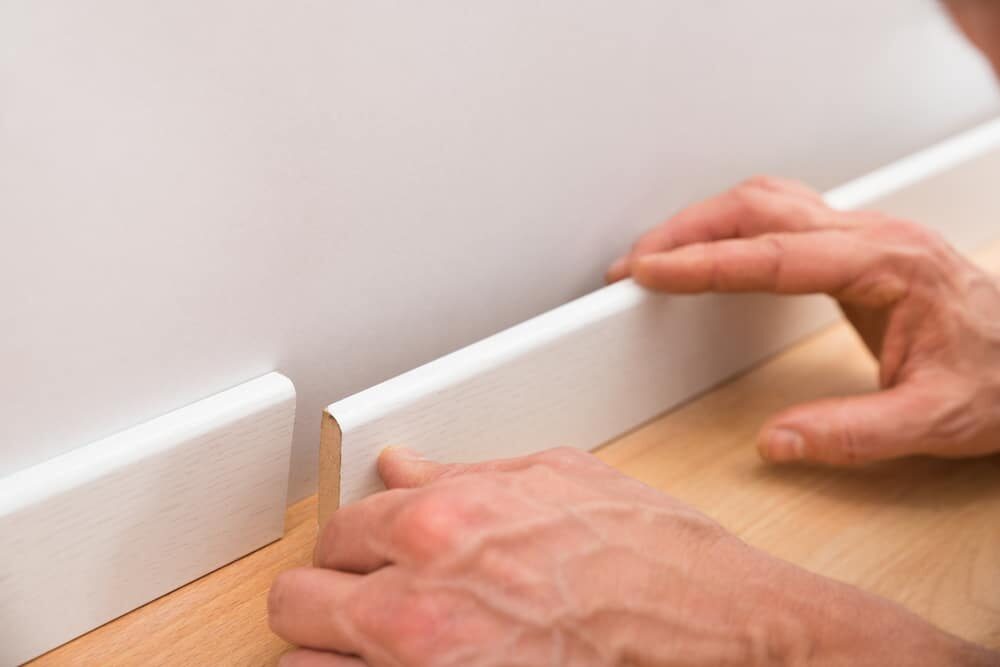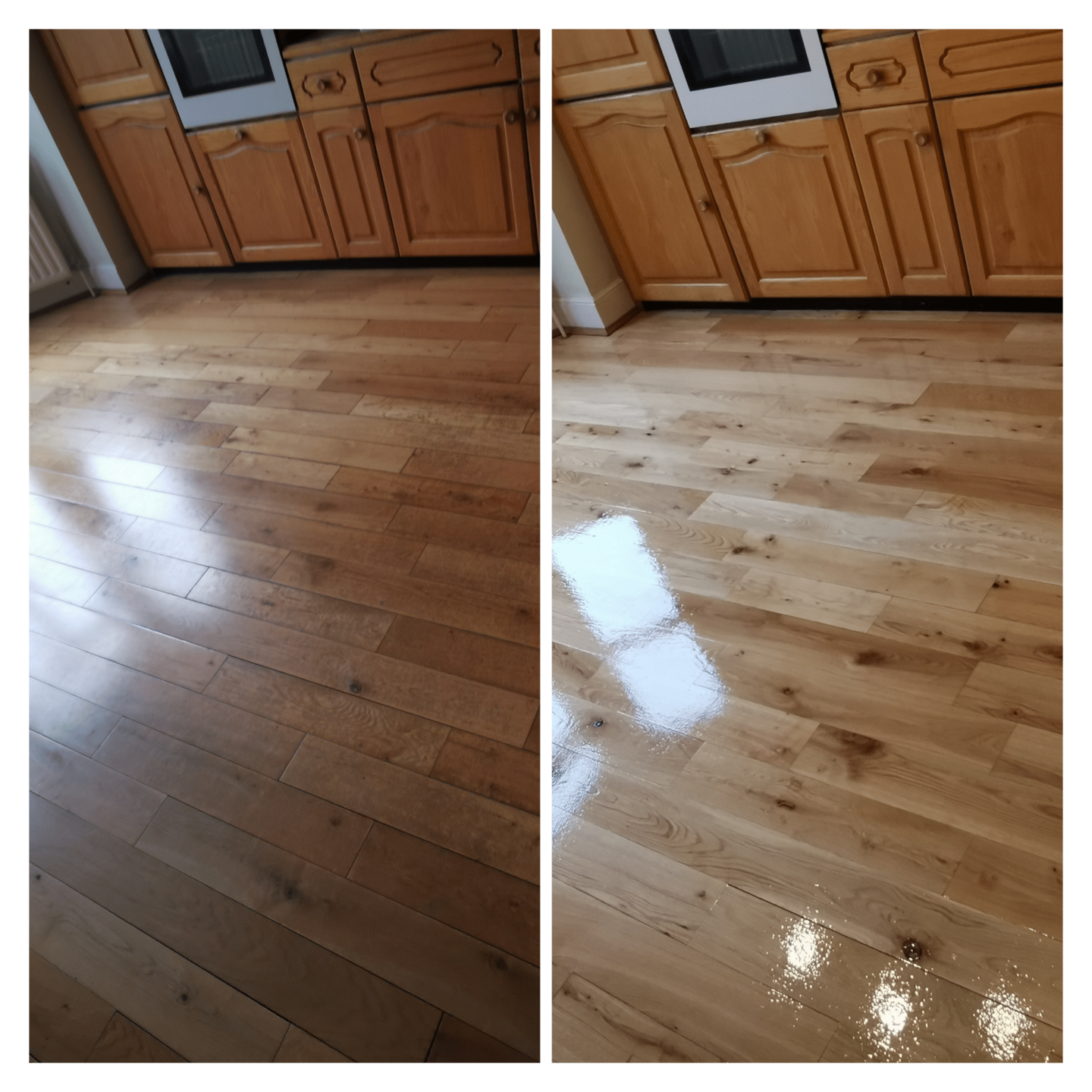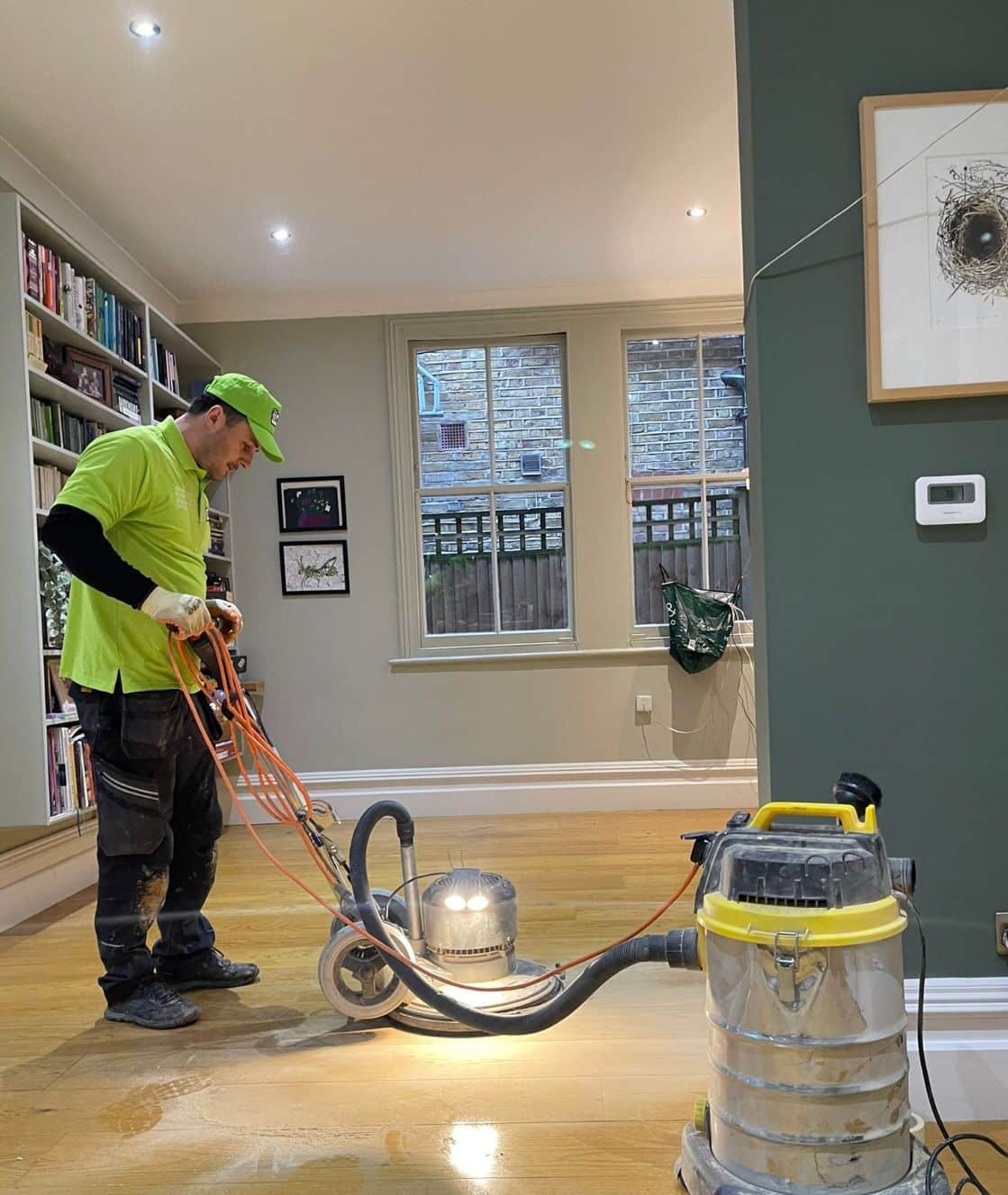London:
Nationwide:
Walnut Flooring: Pros and Cons for Informed Choices
Posted on December 6, 2023
Wood Flooring
Walnut Flooring: Unveiling the Pros and Cons for Smart Home Choices
Welcome to our comprehensive guide to walnut flooring, an increasingly popular choice for homeowners and designers alike. Renowned for its rich colour and distinctive grain patterns, walnut flooring is a statement of luxury and elegance in any space. However, like any material, it comes with its own set of advantages and challenges. In this article, we delve into the world of walnut flooring, examining both its pros and cons to help you make an informed decision.
Walnut flooring has long been a symbol of sophistication in interior design. Its deep, chocolatey tones and unique variations provide a sense of warmth and character that is hard to replicate. Whether you’re renovating an old space or crafting a new one, the choice of flooring plays a pivotal role in the overall ambiance and functionality of your home.
But is walnut flooring the right choice for you? It’s a significant investment, and with so many options available in the market, it’s crucial to weigh all factors. From its aesthetic appeal to its durability, maintenance requirements, and cost, we will guide you through every aspect of walnut flooring.
Our goal is to arm you with all the information you need to decide whether walnut flooring aligns with your lifestyle, budget, and design preferences. So, let’s embark on this journey together and explore the beautiful world of walnut flooring, one plank at a time.
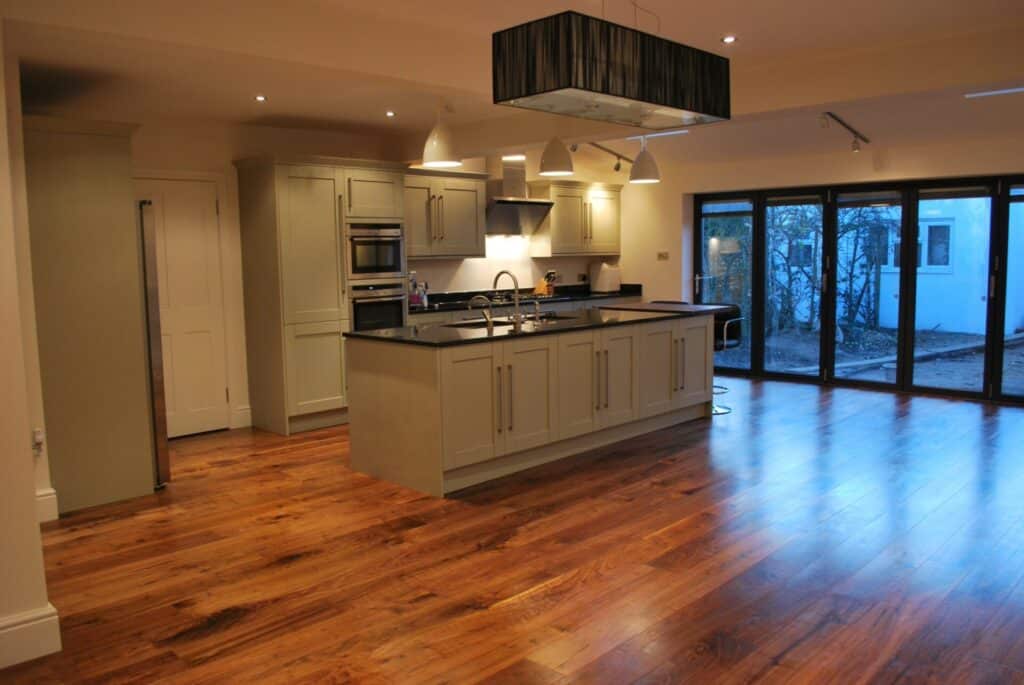
The pros of walnut flooring
Walnut flooring is not just a flooring option; it’s a statement. Its unique characteristics make it a desirable choice for many homeowners. Here are some of the key benefits:
-
Aesthetic Appeal: The Rich Look of Walnut
- Walnut flooring is prized for its rich, dark tones and elegant grain patterns. This luxurious look can transform any room into a sophisticated space. Its natural warmth adds character and depth, making it a perfect choice for both traditional and contemporary interiors.
-
Durability and longevity
- Walnut is a hard and durable wood, making it suitable for flooring. It withstands the rigours of daily life, making it a long-lasting investment. While it can develop a patina over time, many homeowners find that this adds to its charm, giving the floor a storied and lived-in feel.
-
Versatility in Design and Styling
- The beauty of walnut flooring is its versatility. It complements a wide range of interior designs, from rustic country houses to modern urban apartments. Its deep colour provides a stunning contrast to lighter furnishings and works well with a variety of colour palettes.
-
Impact on Property Value
- Installing walnut flooring can increase the value of your property. Its luxurious appeal and durability make it an attractive feature for potential buyers, should you ever decide to sell your home.
-
Unique Colour Variations
- Each plank of walnut flooring is unique, offering a range of colour variations and patterns. This means that your floor will be truly one-of-a-kind, adding a personalised touch to your home.
-
Warmth and Insulation
- Walnut flooring is not just visually warm; it also provides natural insulation for your home. This can help in maintaining a comfortable indoor temperature and potentially reducing heating costs in colder months.
-
Acoustic Benefits
- The natural properties of walnut wood can improve the acoustics of a room by dampening sound, making it a popular choice in spaces where echo reduction is desired.
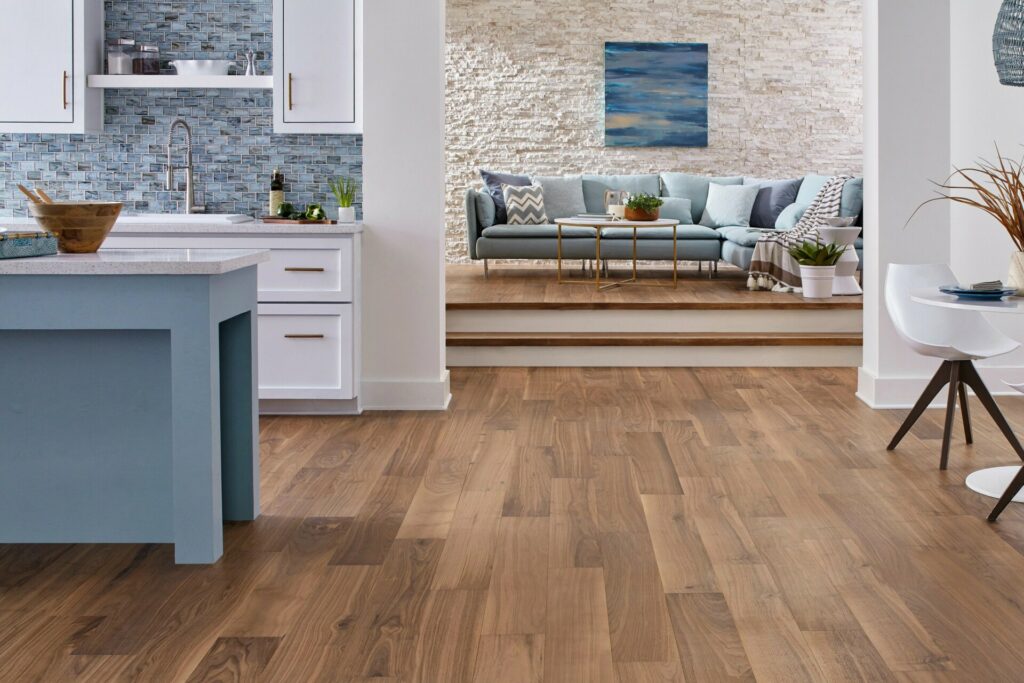
The cons of walnut flooring
While walnut flooring offers numerous benefits, it’s important to consider its drawbacks to ensure it aligns with your specific needs. Here are some potential cons of choosing walnut flooring:
-
Cost Considerations
- Walnut is often more expensive than other hardwood options. This higher cost is due to its rarity and the demand for its luxurious appearance. Budget-conscious homeowners may find this a significant factor in their decision-making process.
-
Susceptibility to Scratches and Dents
- Despite its hardness, walnut is still prone to scratches and dents, particularly in high-traffic areas. This can be a concern for households with pets or heavy furniture. Regular maintenance and careful use are necessary to preserve its appearance.
-
Maintenance Requirements
- Walnut flooring requires regular maintenance to keep it looking its best. This includes periodic sanding, sealing, and refinishing, which can add to the overall cost and effort of having walnut floors.
-
Sensitivity to Light and Color Fading
- Over time, walnut wood can fade or change colour when exposed to sunlight. This might require you to rearrange furniture periodically to ensure even coloration across the floor.
-
Moisture Sensitivity
- Like many hardwoods, walnut is sensitive to moisture and humidity changes. It can warp or swell in damp conditions, which makes it less suitable for areas like bathrooms or basements without proper sealing and care.
-
Limited Availability in Specific Grades or Styles
- Depending on where you live, finding walnut flooring in the grade or style you want might be challenging. This limitation could affect your project timeline or design choices.
-
Environmental Considerations
- For those concerned about sustainability, it’s important to verify that your walnut flooring comes from responsibly managed forests. Not all walnut flooring is sourced sustainably, which might be a concern for environmentally conscious homeowners.
While walnut flooring is undeniably beautiful and adds value to your home, it’s crucial to weigh these potential drawbacks against its benefits. In the following sections, we will explore how walnut compares to other flooring options, helping you make the most informed choice for your home.

Comparing Walnut to Other Flooring Options
When choosing the right flooring, it’s essential to compare walnut to other popular materials. This comparison will help you understand how walnut stands out and where it might fall short.
Walnut vs. oak
Durability: Both walnut and oak are durable, but oak is slightly harder, making it more resistant to scratches and dents.
Colour and Grain: Walnut offers darker hues and a more pronounced grain pattern, while oak tends to be lighter with a subtler grain, providing a different aesthetic.
Cost: Oak is generally more affordable than walnut, making it a budget-friendly option.
Maintenance: Both require similar maintenance, but oak’s hardness can mean less frequent refinishing.
Walnut vs. Engineered Wood
Natural Appearance: Walnut’s natural beauty is hard to replicate. Engineered wood offers versatility in appearance but lacks the unique character of solid walnut.
Durability: Engineered wood can be more resistant to moisture and temperature changes, making it more versatile for different environments.
Cost: Engineered wood is often less expensive and can be a more cost-effective option for those on a tight budget.
Sustainability: Engineered wood uses less solid wood, which can be a more sustainable option.
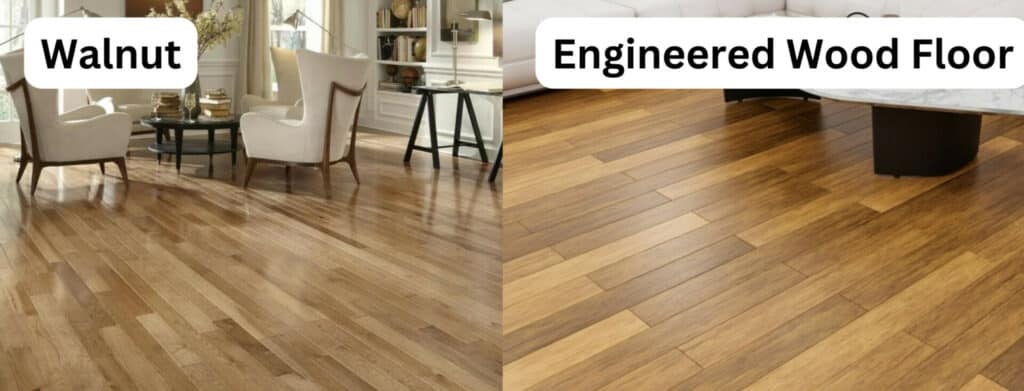
Walnut vs. laminate
Aesthetic: While laminate can mimic the look of walnut, it doesn’t fully capture the richness and depth of real wood.
Durability and Maintenance: Laminate is highly durable and requires less Floor Maintenance, making it ideal for high-traffic areas and homes with pets or children.
Cost: Laminate is significantly cheaper than real walnut, appealing to budget-conscious homeowners.
Feel and Sound: Laminate doesn’t have the same warmth and sound-dampening qualities as walnut, feeling and sounding more artificial.
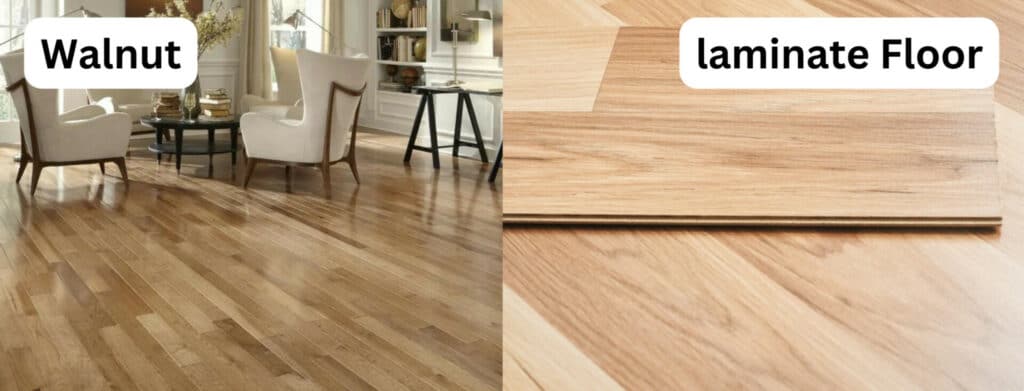
Walnut vs. Bamboo
Eco-Friendliness: Bamboo is a more sustainable option, as it’s a fast-growing renewable resource.
Hardness and Durability: High-quality bamboo can be harder and more resistant to wear and tear than walnut.
Aesthetics: Bamboo has a distinctive look that differs from the classic appearance of walnut. It offers a more contemporary and minimalistic style.
Cost: Bamboo flooring tends to be more cost-effective compared to walnut.
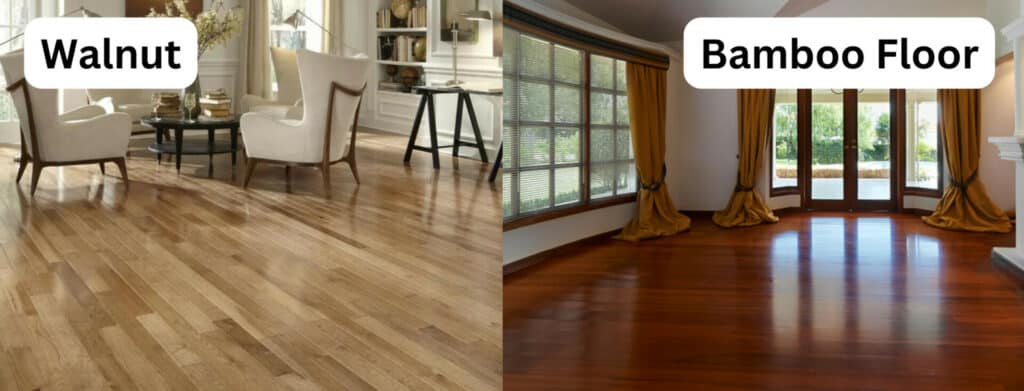
Walnut vs. tile
Maintenance: Tile is easier to maintain and more resistant to moisture and stains than walnut.
Aesthetic and Warmth: Walnut provides a warmer, more inviting look and feel than tile, which can be cold and hard underfoot.
Installation: Tile installation can be more labour-intensive and costly than installing hardwood like walnut.
Making an informed decision
Choosing the right flooring is a significant decision that impacts both the aesthetics and functionality of your home. When considering walnut flooring, it’s crucial to balance your desires with practical considerations. Here are key factors to help you make an informed decision:
-
Assessing your needs and preferences
- Consider the usage of the area where the flooring will be installed. High-traffic areas may require more durable materials.
- Think about the overall design theme of your home. Does the rich, dark tone of walnut complement your decor?
- Evaluate your tolerance for maintenance. Are you prepared for the upkeep required to maintain walnut’s beauty?
-
Budgeting for Walnut Flooring
- Walnut is a premium flooring option, so ensure it fits within your budget. Don’t forget to factor in installation and future maintenance costs.
- Compare prices from different suppliers to find the best deal. Sometimes, discounts or promotions can make higher-end options more affordable.
-
Long-term Considerations
- Think about the longevity of the flooring. Walnut is a long-term investment that can increase your home’s value.
- Consider the potential for changes in colour and patina over time. Will you appreciate the evolving character of the wood?
-
Environmental Impact
- If sustainability is important to you, research the source of the walnut wood. Opt for suppliers who practice responsible forestry.
-
Seeking professional advice
- Consult with a flooring specialist or interior designer. They can provide valuable insights tailored to your specific situation.
- Look at samples in different lighting conditions to get a true sense of how the flooring will look in your home.
-
Testing Durability and Maintenance
- If possible, visit showrooms or homes with walnut flooring to observe how it holds up over time and under different conditions.
-
Considering Alternatives
- If walnut doesn’t meet all your criteria, be open to exploring other materials. Sometimes, a different option might be a better fit for your needs.
Choosing walnut flooring is a personal decision that should be made after careful consideration of various factors. Weighing the pros and cons, understanding your own preferences and requirements, and considering the long-term impact are all crucial steps in making an informed choice.
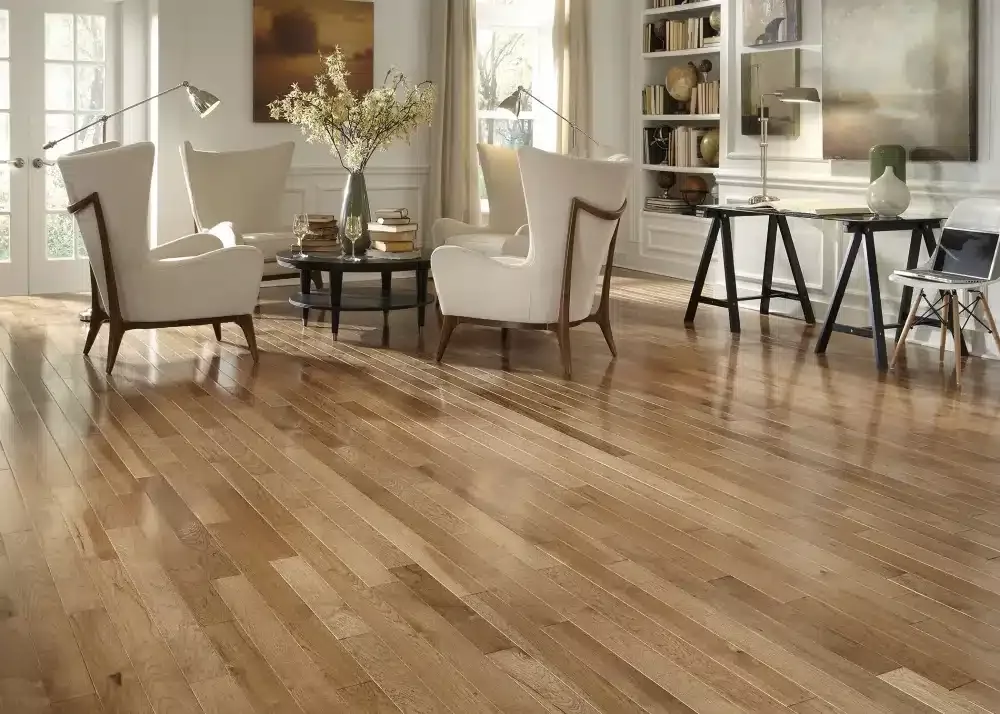
Installation Tips and Best Practices
Installing walnut flooring is a crucial step in ensuring its longevity and beauty. Whether you’re opting for a professional installation or a DIY project, here are some tips and best practices to consider:
-
Preparing for Installation
- Acclimatisation: Allow the walnut flooring to acclimatise to your home’s environment for at least a few days before installation. This helps prevent warping or gaps.
- Subfloor Preparation: Ensure the subfloor is clean, level, and dry. Any irregularities can cause issues after installation.
-
Professional vs. DIY Installation
- Professional Installation: For the best results, consider hiring a professional. They have the expertise to handle the nuances of installation, ensuring a flawless finish.
- DIY Installation: If you’re experienced in home improvement projects, DIY installation can be a rewarding challenge. Make sure you have the right tools and understand the process thoroughly.
-
Choosing the Right Tools and Materials
- Invest in quality tools and materials. This includes a good saw, flooring nails, a nail gun, and the appropriate adhesives.
-
Installation Techniques
- Nail-Down Method: Most common for solid walnut flooring. This method provides a firm hold and allows for natural wood expansion.
- Floating Method: Suitable for engineered walnut flooring. It’s easier for DIY but may not feel as solid underfoot.
-
Care and maintenance tips
- Immediately after installation, apply a sealant to protect the wood.
- Use felt pads under furniture legs to prevent scratches.
- Keep the indoor humidity at a consistent level to avoid warping.
-
Dealing with challenges
- Be prepared for challenges like uneven boards or tricky cuts around corners. Patience and precision are key.
-
Post-Installation Care
- After installation, clean the floor with products specifically designed for walnut wood.
- Avoid water and harsh chemicals on the flooring.
-
Regular Maintenance
- Regular maintenance includes sweeping, dry mopping, and promptly cleaning spills to prevent staining.
The installation of walnut flooring requires careful planning and execution. Whether you choose to hire professionals or take on the task yourself, following these tips and best practices will ensure your walnut flooring is installed correctly and remains beautiful for years to come.
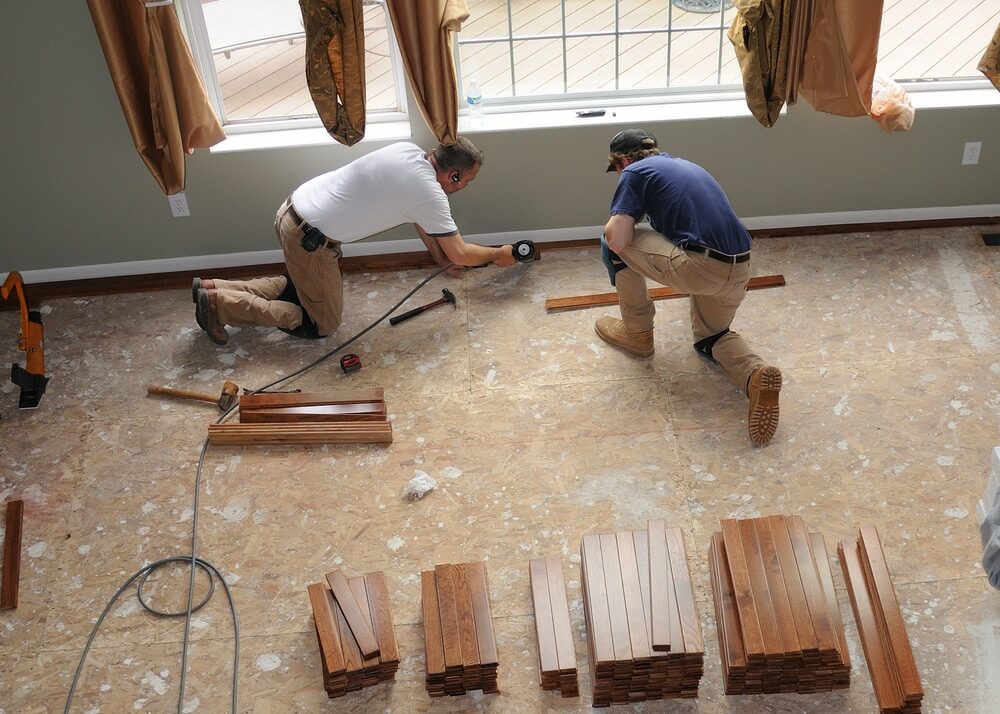
Conclusion
In this comprehensive guide, we’ve explored the many facets of walnut flooring, from its stunning aesthetic appeal to the practical considerations that come with it. Walnut flooring is not just a choice in decor; it’s an investment in your home’s future. Its rich tones and durable nature make it a coveted option for those seeking a blend of elegance and longevity.
We’ve discussed the pros of walnut flooring, such as its unique beauty, durability, and the value it adds to your property. However, it’s equally important to consider the cons, like the higher cost, maintenance requirements, and sensitivity to light and moisture. By comparing walnut to other flooring options, we aimed to provide a balanced perspective, helping you understand where it stands in the wider context of available choices.
The decision to choose walnut flooring should be informed by a thorough consideration of your personal needs, preferences, and the specific conditions of your home. It’s a decision that should be made not just with the heart but also with the mind, taking into account both the aesthetic desires and the practical realities of daily life.
Remember, the beauty of walnut flooring goes beyond its surface. Its true value lies in the warmth and character it brings to your home, creating a space that’s not only visually appealing but also rich in comfort and style.
As we conclude, we hope that this guide has provided you with the insights needed to make an informed choice about walnut flooring. Whether you decide in its favour or opt for an alternative, the key is to choose flooring that resonates with your lifestyle, budget, and design aspirations. May your home be a reflection of your tastes and a haven of comfort for many years to come.

Sanding
We provide virtually dust-free sanding with our continuous belt machinery with mobile extraction units, giving you a safer environment for your family.
Oiling
This organic finish not only adds beauty to your home but also has exceptional water-repellent characteristics, making it easier to clean and maintain.
Waxing
This natural floor finish offers the softest and most mellow appearance – and leaves your floor able to breath.
Buffing
Using soft buffing machines (and hand-polishing where required) will bring a wonderful sheen to your newly-finished floor.
Repairs
We offer a full assessment of your wooden floors to determine what repairs are needed to provide the perfect working surface for the later stages of sanding, staining and sealing.
Restoration
We offer a comprehensive restoration process designed to address floors that are improperly fitted or damaged over time through wear and tear.
Request a fixed price quote for your wood floor restoration now
Simply enter your postcode below to get started.
Services
Wood Floor Sanding Wood Floor Restoration Wood Floor Scratch Repair Squeaky Wood Floor Repair Parquet Floor Sanding Parquet Floor Restoration Commercial Floor Sanding Church Floor Sanding Community Centre Floor Sanding School Floor Sanding Gap Filling Gap Filling with ResinCopyright © Mr Sander®
Privacy & Cookies Terms & Conditions Complaints Procedure Cancellation Rights Sitemap